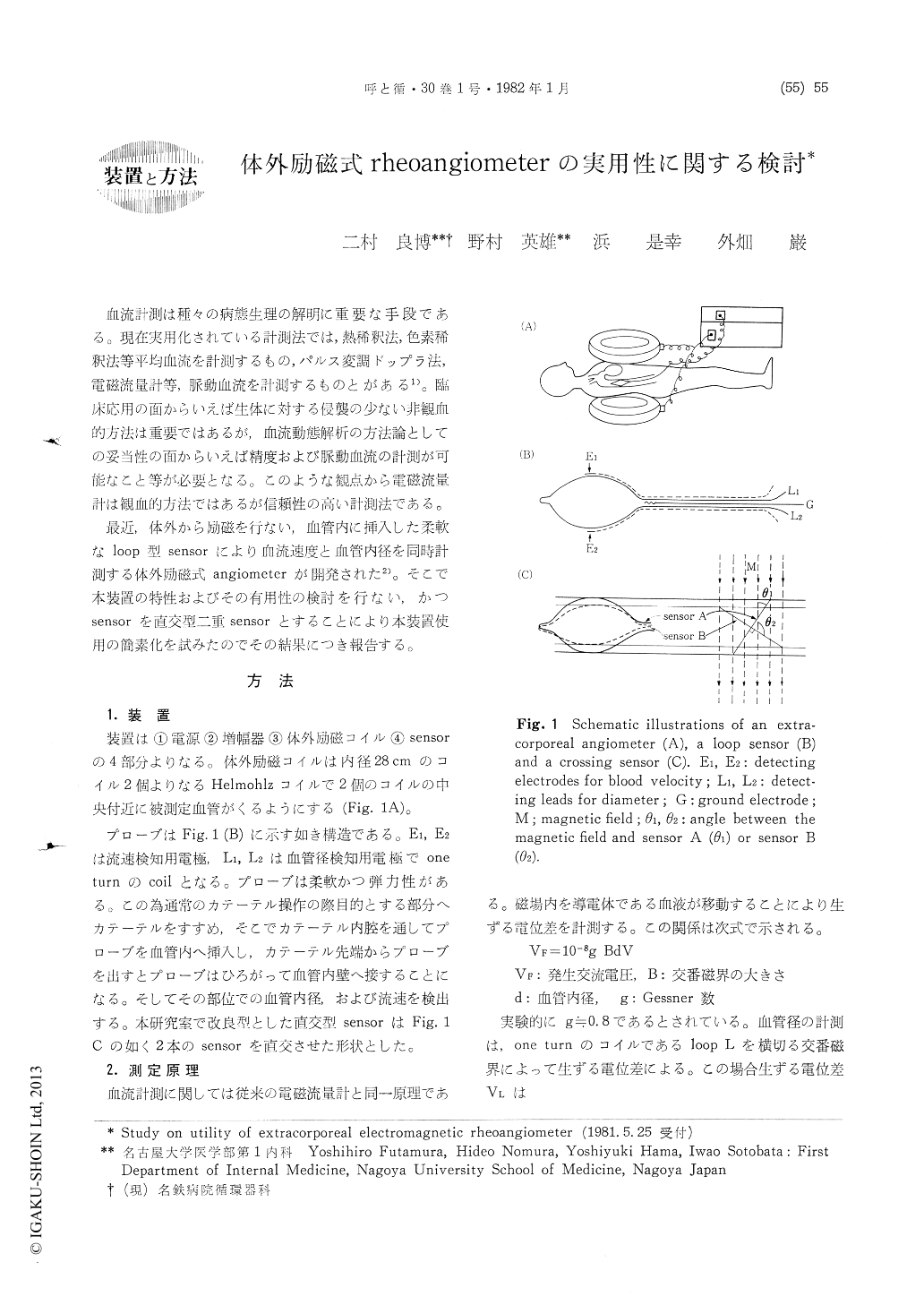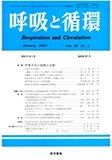Japanese
English
- 有料閲覧
- Abstract 文献概要
- 1ページ目 Look Inside
血流計測は種々の病態生理の解明に重要な手段である。現在実用化されている計測法では,熱稀釈法,色素稀釈法等平均血流を計測するもの,パルス変調ドップラ法,電磁流量計等,脈動血流を計測するものとがある1)。臨床応用の面からいえば生体に対する侵襲の少ない非観血的方法は重要ではあるが,血流動態解析の方法論としての妥当性の面からいえば精度および脈動血流の計測が可能なこと等が必要となる。このような観点から電磁流量計は観血的方法ではあるが信頼性の高い計測法である。
最近,体外から励磁を行ない,血管内に挿入した柔軟なloop型sensorにより血流速度と血管内径を同時計測する体外励磁式angiometerが開発された2)。そこで本装置の特性およびその有用性の検討を行ない,かつsensorを直交型二重sensorとすることにより本装置使用の簡素化を試みたのでその結果につき報告する。
The extracorporeal electromagnetic rheoangio-meter has the ability to measure blood volocity and blood vessel diameter simultaneously. The utility of this apparatus was examined. The blood flow-output relation and the diameter-out-put relation was almost linear. Variations of sensor output at a constant flow by changing the situation of the probe in the magnetic field was less than 15% of the output at the center of the magnetic field if the probe was situated within about 5cm apart from the center of it. A leak current from this apparatus was 5μ amperes and, if the polarity of the power source was selected, this current was less than 1μ ampere. A difficulty to use this angiometer clinic-ally is to keep the surface of the sensor loop at a right angle to the direction of the magnetic field. This manipulation is trouble because of the difficulty to see the loop by fluoroscopy. This study attempted to omit this operational difficulty by using the crossing sensor. This sensor was made by two loop sensors which crossed at a right angle each other. If the angles between the surface of each loop and the direction of the magnetic field are θ1 and θ2, and the blood velocity is Vf, the outputs of sensor A (Vfl) and sensor B (Vf2) are Vf・sin θ1 and Vf・sin θ2.θ2- θ1= π/2 (radian). Therefore, Vf=√Vf12+Vf22. This formula shows the possibility to obtain the blood velocity independently of θ1 and θ2. The vessel diameter was able to be measured in the same way.The experiment about the characteristics of the crossing sensor showed that the output of the signal was independent of the direction of the sensor. One of the problems to use clinic-ally the extracorporeal electromagnetic rheoangio-meter was solved by using this crossing sensor.

Copyright © 1982, Igaku-Shoin Ltd. All rights reserved.


